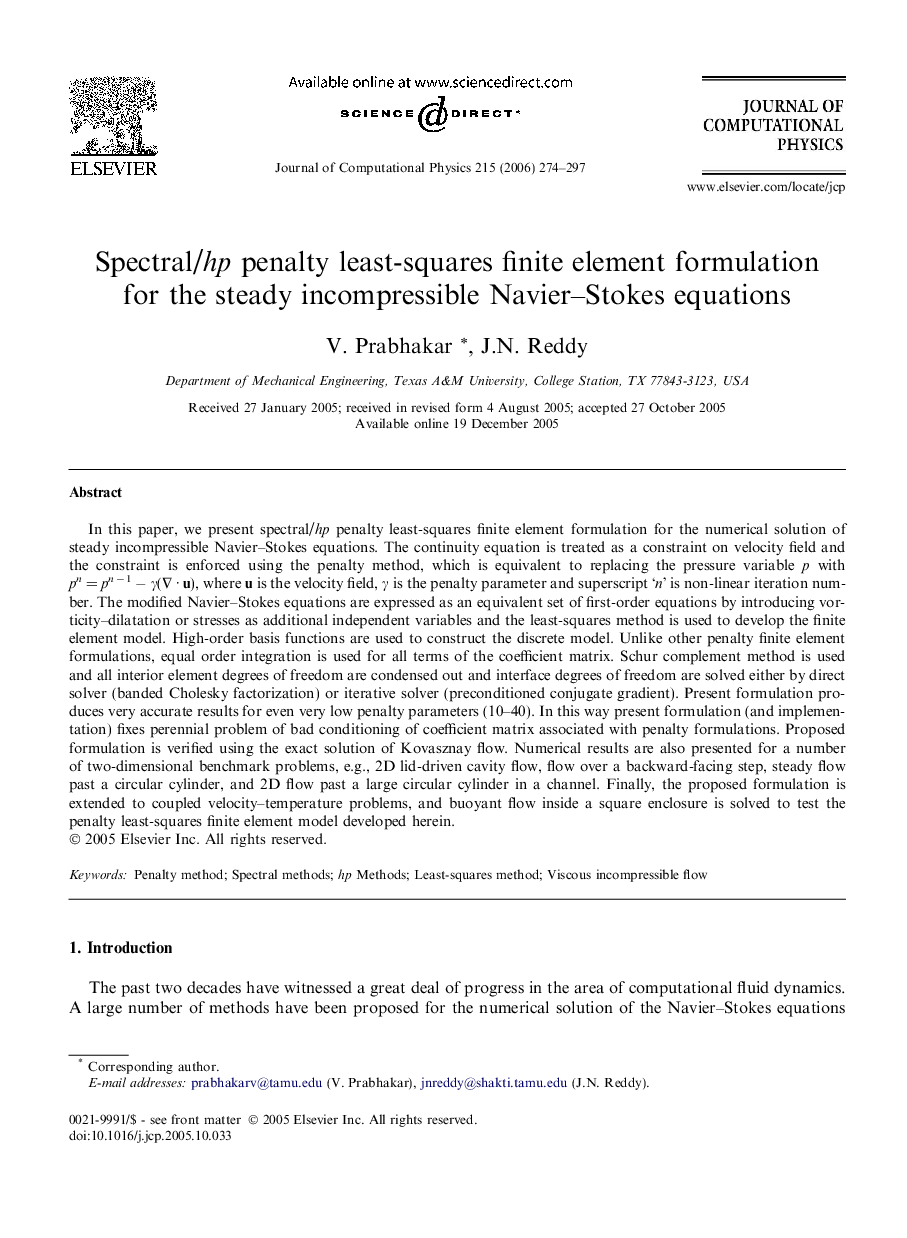| کد مقاله | کد نشریه | سال انتشار | مقاله انگلیسی | نسخه تمام متن |
|---|---|---|---|---|
| 521762 | 867785 | 2006 | 24 صفحه PDF | دانلود رایگان |

In this paper, we present spectral/hp penalty least-squares finite element formulation for the numerical solution of steady incompressible Navier–Stokes equations. The continuity equation is treated as a constraint on velocity field and the constraint is enforced using the penalty method, which is equivalent to replacing the pressure variable p with pn = pn − 1 − γ(∇ · u), where u is the velocity field, γ is the penalty parameter and superscript ‘n’ is non-linear iteration number. The modified Navier–Stokes equations are expressed as an equivalent set of first-order equations by introducing vorticity–dilatation or stresses as additional independent variables and the least-squares method is used to develop the finite element model. High-order basis functions are used to construct the discrete model. Unlike other penalty finite element formulations, equal order integration is used for all terms of the coefficient matrix. Schur complement method is used and all interior element degrees of freedom are condensed out and interface degrees of freedom are solved either by direct solver (banded Cholesky factorization) or iterative solver (preconditioned conjugate gradient). Present formulation produces very accurate results for even very low penalty parameters (10–40). In this way present formulation (and implementation) fixes perennial problem of bad conditioning of coefficient matrix associated with penalty formulations. Proposed formulation is verified using the exact solution of Kovasznay flow. Numerical results are also presented for a number of two-dimensional benchmark problems, e.g., 2D lid-driven cavity flow, flow over a backward-facing step, steady flow past a circular cylinder, and 2D flow past a large circular cylinder in a channel. Finally, the proposed formulation is extended to coupled velocity–temperature problems, and buoyant flow inside a square enclosure is solved to test the penalty least-squares finite element model developed herein.
Journal: Journal of Computational Physics - Volume 215, Issue 1, 10 June 2006, Pages 274–297